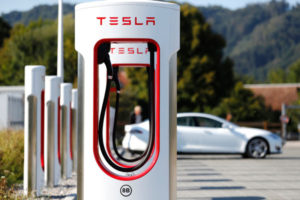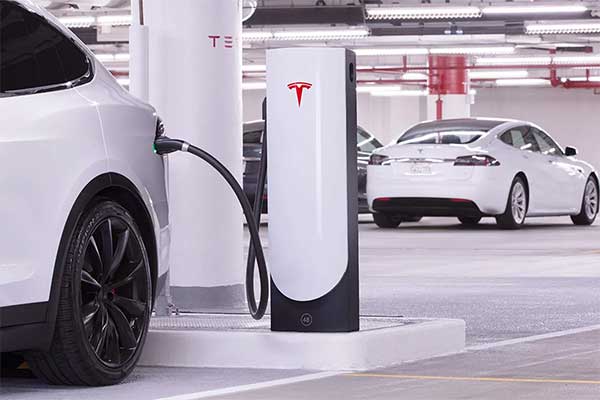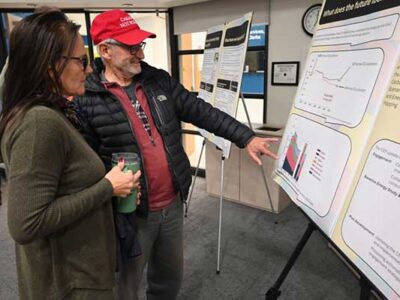- The automotive landscape is buzzing with a shift towards Tesla's North American Charging Standard (NACS), as leading automakers like Hyundai, Kia, and Genesis join the fray to extend Tesla Supercharger access to their customers.
- This move, aimed at enhancing the EV ownership experience, comes with provisions like adapters for existing EV owners, ensuring a seamless transition.
- The growing adoption of NACS highlights a collaborative stride towards a more accessible and user-friendly EV charging ecosystem.
The mass adoption of Tesla’s North American Charging Standard (NACS) is well on its way, with Hyundai, Kia, and Genesis hopping aboard the growing bandwagon. They join a burgeoning list of automakers that have recognized the potential of Tesla’s charging infrastructure, which is heralded for its extensive network and simplified charging process.
Here’s a more in-depth look into the unfolding scenario and the impacts on the automotive ecosystem.
The tipping point:
The shift towards NACS gained momentum when Hyundai and Kia announced their plans to incorporate NACS ports in their electric vehicles (EVs) for the U.S. and Canada, aiming to introduce this feature by the end of 2024 and the first half of 2025 respectively.
Genesis, Hyundai’s luxury brand, is also following suit.
This move opens up access to thousands of Tesla Superchargers spread across North America, a significant benefit for EV owners given the current scarcity of reliable charging infrastructure.
Moreover, it’s a testament to the growing influence of Tesla’s NACS in the automotive industry, aligning with the likes of Ford, General Motors, Mercedes-Benz, Honda, and Rivian, who have already committed to this transition.
The catalysts behind the shift:
The change in tide was arguably spearheaded by a series of strategic collaborations initiated by Tesla with other automakers. Tesla’s overtures breathed new life into NACS, nudging it closer to becoming the de facto charging standard in North America.
The robust support for NACS was further bolstered when SAE International, an automotive standards body, expedited work to develop an industry standard around NACS, which significantly allayed fears of Tesla monopolizing this crucial aspect of the EV experience.

The Tesla Supercharger network consists of 12,011 individual Supercharger stalls at 1,422 locations worldwide, as of January 2019.
The NACS adoption wave:
Most automakers targeting the adoption of NACS are eyeing the 2025 models, though Hyundai is aiming for an even earlier timeline. The move is expected to smoothen the EV ownership experience by providing access to Tesla’s well-placed Superchargers along highways, which currently accounts for about 60% of fast chargers in the U.S.
As for Volkswagen, one of the world’s largest automakers, it has been in talks with Tesla since the summer of 2023 regarding the adoption of NACS, reflecting a potential industry-wide shift towards this charging standard.
Addressing concerns of existing EV owners:
The transition to NACS raises legitimate concerns for existing EV owners, especially those with vehicles equipped with the Combined Charging System (CCS) standard. Automakers are addressing this issue by offering adapters to bridge the compatibility gap between CCS and NACS.
Hyundai, Kia, and Genesis, for instance, will make adapters available via dealers starting in 2025. Similarly, Ford CEO Jim Farley revealed that all existing Ford EV owners would receive NACS adapters, hinting at a likely free distribution.
Other automakers like Honda, Acura, and Rivian have also made announcements regarding the availability of adapters from 2024, with Rivian even confirming the provision of free adapters to all owners.
What’s next?
The automotive industry’s move towards a unified charging standard underscores a significant stride towards alleviating the range anxiety associated with EV ownership. By embracing Tesla’s NACS, automakers are not only expanding the charging network for their customers but also fostering a more cooperative ecosystem that bodes well for the future of electric mobility.
The provision of adapters for existing EV owners is a thoughtful gesture to ensure a smooth transition, albeit the details regarding the distribution and potential costs of these adapters are yet to be fully elucidated. This ongoing shift highlights the industry’s proactive steps towards a more sustainable and user-friendly EV landscape, painting a promising picture for the road ahead.















Comments